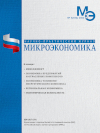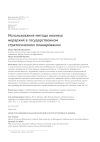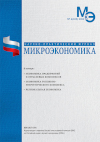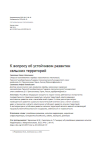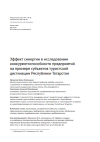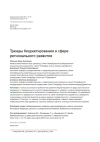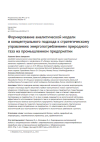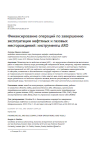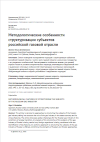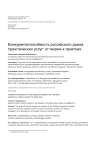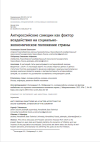Analysis of consumer perception in the space of image-forming factors. Part 2: Positions in comparison with competitors
DOI: 10.33917/mic-5.106.2022.26-49
This study considers the analytical principles of market object perception (goods, trademarks, firms) by consumer in the image-forming space, with an emphasis on the correctness of the application of methods and interpretation of results (in terms of comparing perceived positions with competitors’ positions against the consumer ideals). The proposed approach to analysis is based on the identification of factors that determine market processes and the construction of images of real goods / brands / firms in the perception of representatives of the target group. The issues of product / brand / company promotion are discussed based on the analysis of consumer perception. The presented approach is applied to solve some practical problems, such as identifying factors of perception of goods / brands / firms, building their images in the space of consumer attitudes, analyzing the configuration of images in comparison with the competitors and ideals, developing a strategy and essential details of promotion.
References:
1. Aivazyan S.A., Buchstaber V.M., Enyukov I.S., Meshalkin L.D. Applied Statistics: Classification and Dimension Reduction. M.: Finance and statistics, 1989. 607 p. (In Russ.).
2. Zakuskin S.V. Analysis of consumer perception in the space of image-forming factors. Part 1. Positions in comparison with the ideal. Microeconomics. 2022;4:5-24. (In Russ.).
3. Zakuskin S.V. Analysis of rational preferences in the image-forming space. Microeconomics. 2022;1:40-54. (In Russ.).
4. Zakuskin S.V. Analysis of rational choice in the image-forming space. Microeconomics. 2021;5:14-29. (In Russ.).
5. Zakuskin S.V. Formation of integral indicators in marketing research based on the results of quantification. Creative Economy. 2021;15(5):2091-2114. (In Russ.).
6. Zakuskin S.V. Features of the analysis of formation and differentiation of market images in the space of rational relations/ Creative Economy. 2020;14:12. (In Russ.).
7. Zakuskin S.V. Controlling the movement of market images in a competitive environment. Creative Economy. 2020;14(10):2457-2480. (In Russ.).
8. Zakuskin S.V. Analysis of the competitive situation through the study of the configuration of images in the market space. Creative Economy. 2020;14(8):1795-1820. (In Russ.).
9. Zakuskin S.V. Analysis of differentiation of market images. Creative Economy. 2020;14(7):1447-1466. (In Russ.).
10. Zakuskin S.V. Analysis of the formation of market images. Creative Economy. 2020;14(6):1115-1136. (In Russ.).
11. Zakuskin S.V. The entertainment center services market: a look through the prism of image-forming factors. Part 7. Peculiarities of rational perception. Creative Economy. 2020;14(1):93-113. (In Russ.).
12. Zakuskin S.V. The entertainment center services market: a look through the prism of image-forming factors. Part 3. Peculiarities of emotional perception. Creative Economy. 2019;13(8):1573-1596. (In Russ.).
13. Kendall M., Stuart A. Theory of distributions. M.: Nauka, 1966. 588 p. (In Russ.).


